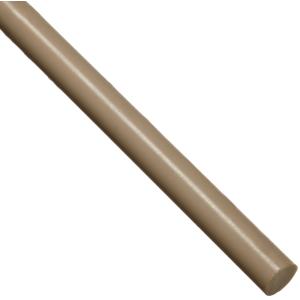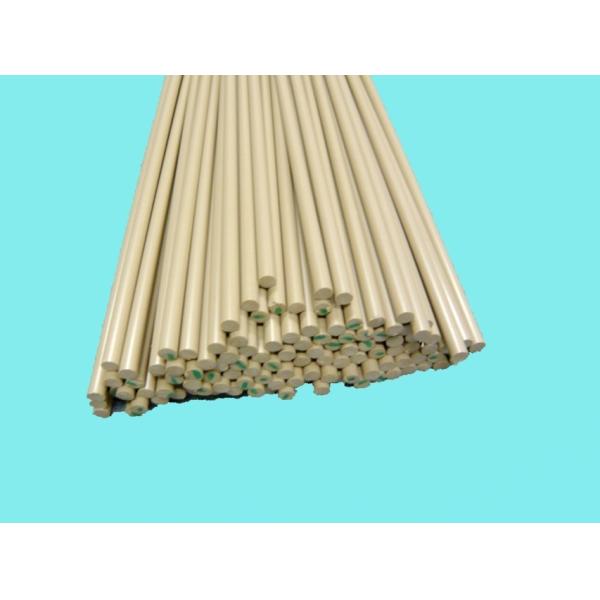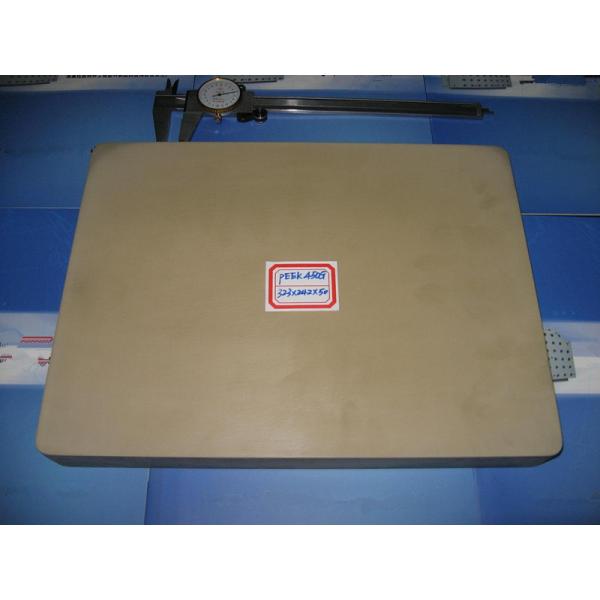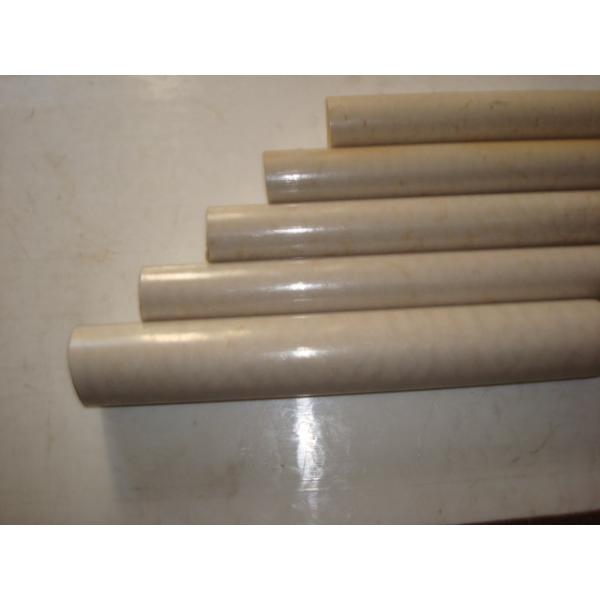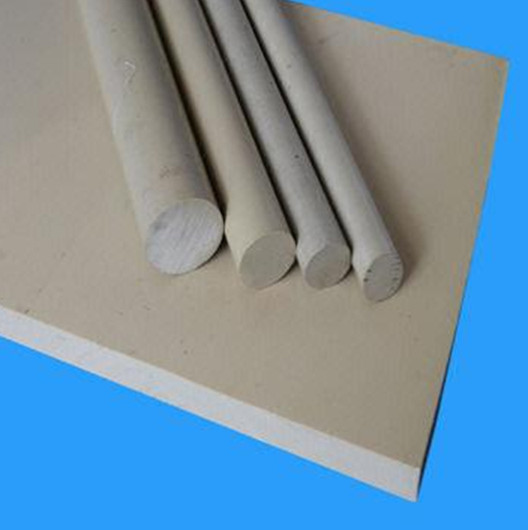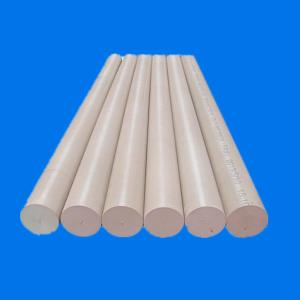PEEK rods are high-performance thermoplastic polymer rods made from Polyetheretherketone, a material renowned for its exceptional mechanical, thermal, and chemical properties. These rods are engineered for demanding applications across various industries, including aerospace, automotive, medical, and oil and gas. They offer a unique combination of high strength, rigidity, and resistance to harsh environments, making them a superior alternative to metals and other plastics in many scenarios. The versatility and reliability of PEEK rods stem from their ability to maintain performance under extreme conditions, such as high temperatures, aggressive chemicals, and continuous mechanical stress. This introduction sets the stage for a deeper exploration of their specifications, benefits, and common queries.
PEEK rods exhibit a range of properties that make them ideal for critical applications:
Below is a comprehensive table outlining the standard parameters for PEEK rods. These specifications are based on industry standards and can vary slightly depending on the manufacturer and grade.
| Parameter | Value / Description | Test Standard |
|---|---|---|
| Material | Polyetheretherketone (PEEK) | - |
| Standard Diameters | 5mm to 200mm (custom sizes available) | - |
| Standard Lengths | 1000mm, 2000mm, 3000mm (custom lengths available) | - |
| Color | Beige, Black, Other colors on request | - |
| Density | 1.30 - 1.32 g/cm³ | ISO 1183 |
| Tensile Strength | > 90 MPa | ISO 527 |
| Flexural Modulus | > 3,700 MPa | ISO 178 |
| Impact Strength, Notched Izod | 5 kJ/m² | ISO 180/1A |
| Continuous Service Temperature | -60°C to +250°C | - |
| HDT @ 1.82 MPa | > 150°C | ISO 75-1/-2 |
| Coefficient of Linear Thermal Expansion | 4.7 x 10⁻⁵ /K | ISO 11359-2 |
| Water Absorption (24h) | < 0.1 % | ISO 62 |
| Flammability Rating | UL94 V-0 | UL 94 |
| Volume Resistivity | > 10¹⁵ Ω·cm | IEC 60093 |
PEEK rods are available in various grades to meet specific application requirements. The choice of grade depends on factors like required lubricity, wear resistance, or structural reinforcement.
What are the primary advantages of using PEEK rods over metal rods?
PEEK rods offer several key advantages over metals. They are significantly lighter, which reduces the overall weight of assemblies, leading to energy savings, particularly in automotive and aerospace applications. They exhibit excellent corrosion and chemical resistance, unlike many metals which can rust or degrade. PEEK is also an electrical insulator and operates quietly, reducing noise in moving parts. Furthermore, they often require no post-machining lubrication and can be machined faster than many metals, reducing production time and cost.
Can PEEK rods be machined easily?
Yes, PEEK rods can be machined using standard metalworking equipment, such as lathes, mills, and drills. However, specific techniques are recommended to achieve optimal results. Using sharp, positive-rake cutting tools is crucial to prevent material tearing. Maintaining adequate cooling, often with compressed air or a light coolant, is important to manage heat buildup, as excessive heat can affect the material's dimensions and surface finish. Following proper machining guidelines ensures high-tolerance, high-quality finished parts.
What is the maximum continuous operating temperature for a PEEK rod?
Unfilled PEEK rods can typically withstand continuous operating temperatures up to 250°C (482°F). For short-term exposure, they can handle peaks even higher. Reinforced grades, such as those with carbon or glass fiber, often have a similar or slightly higher heat deflection temperature but should be evaluated based on the specific application's mechanical load and environmental conditions.
Are PEEK rods resistant to chemicals and radiation?
PEEK rods demonstrate outstanding resistance to a wide range of chemicals, including hydrocarbons, acids, bases, and steam. They are not recommended for use with concentrated sulfuric acid, nitric acid, or certain halogenated solvents. Regarding radiation, PEEK has good resistance to gamma radiation and electron beam sterilization, making it suitable for single-use and reusable medical devices that require sterilization.
Is PEEK a suitable material for food contact and medical applications?
Absolutely. Certain grades of PEEK are USP Class VI certified and ISO 10993 compliant, indicating their biocompatibility and suitability for long-term implantable medical devices and short-term tissue contact. For food contact, PEEK complies with regulations like FDA CFR 21 and EU 10/2011, making it safe for use in food processing machinery components.
How does the cost of PEEK rods compare to other engineering plastics?
PEEK is a premium, high-performance polymer, and its cost is generally higher than that of more common engineering plastics like nylon (PA), acetal (POM), or PTFE. However, the total cost of ownership is often lower. The exceptional durability, long service life, reduced maintenance (e.g., no lubrication), and performance in extreme conditions can lead to significant savings over the lifespan of a component, justifying the initial investment.
What are some typical applications for PEEK rods?
PEEK rods are used in a vast array of demanding applications. Common examples include: compressor valve plates, piston rings, and bearings in the oil and gas industry; bushings, seals, and thrust washers in automotive transmissions; structural components and cable insulation in aerospace; surgical instruments, dental healing abutments, and implant trial components in the medical field; and gears, rollers, and insulators in general industrial machinery.
How should PEEK rods be stored?
PEEK rods should be stored in a cool, dry place away from direct sunlight and sources of heat. They should be kept in their original packaging until use to prevent contamination from dust, dirt, or other chemicals. While PEEK has low moisture absorption, prolonged exposure to high humidity should be avoided to ensure the material's properties are preserved before machining or use.
